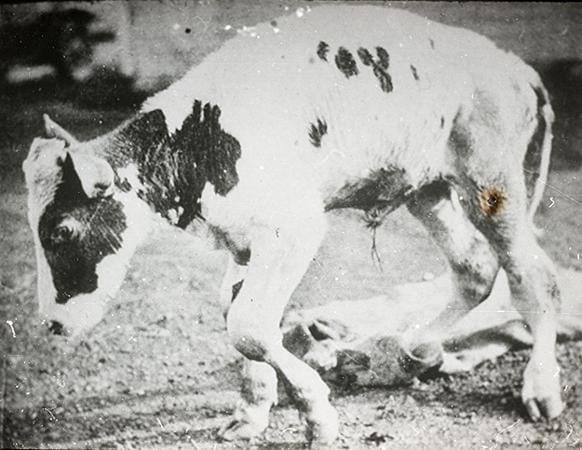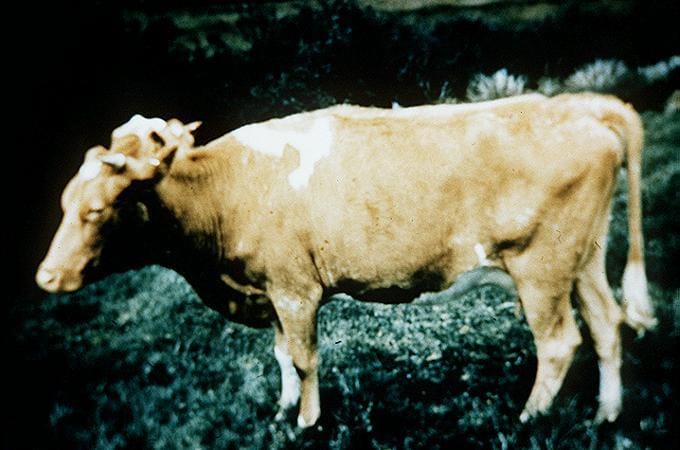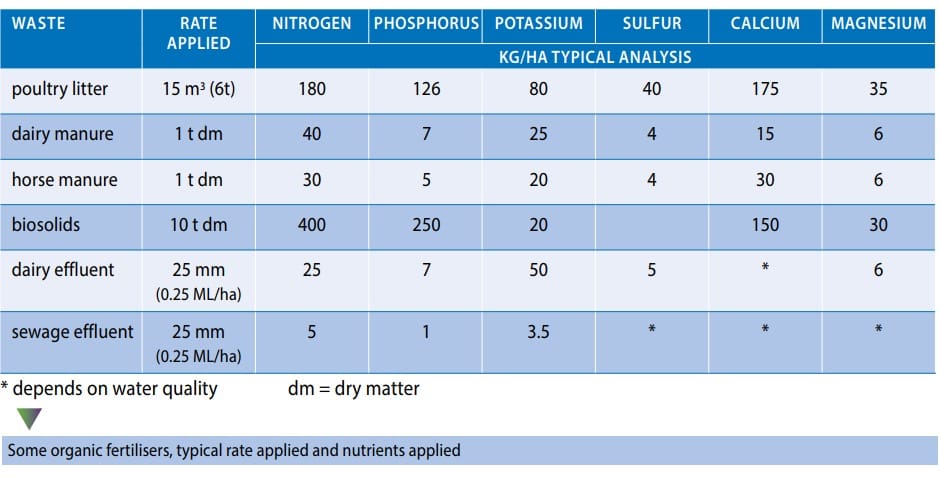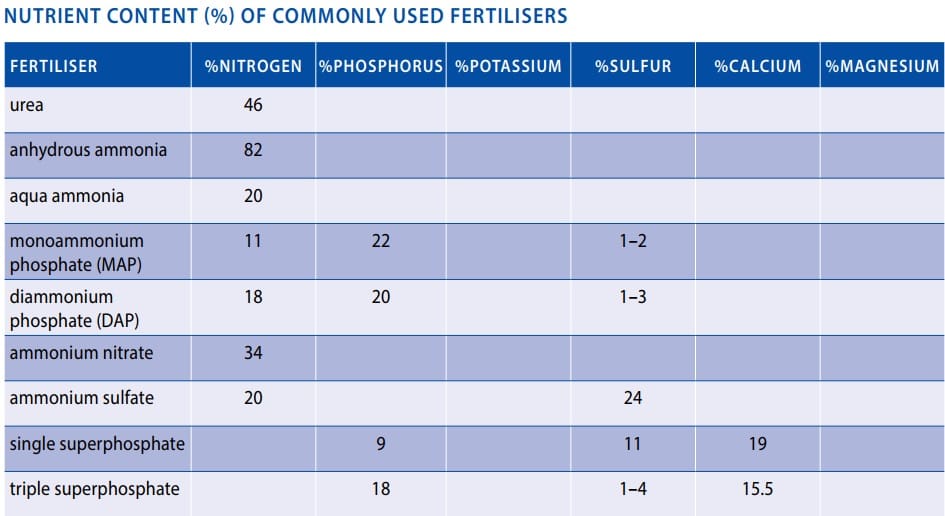Volumes have been written about soil fertility and how to fertilise your pasture the right way.
However, most information out there isn't written for dairy farmers. It doesn't tie the link to how proper fertiliser management leads to better production and profits. So we wrote this concise two-part guide.
In part 1, we spoke about nutrients, how proper fertiliser management can lead to better profits and the four biggest soil-fertiliser limiting factors.
In part 2, we spoke about the major & minor nutrients and its sources in more detail. We also covered how to identify various nutrient deficiencies in your pasture.
Now, in part 3, we cover nutrient deficiencies in dairy cows and how you can create a precise fertiliser-nutrient management plan for your dairy farm.
Nutrient deficiencies in cows
In addition to nutrient deficiencies in your pasture, you also have to be aware of nutrient deficiencies in your animals. These deficiencies can occur when you feed animals with nutrient-deficient grass, hay or silage over a long period.
Here’s a quick list of indicators to help you identify common nutrient deficiencies in your animals.
- Nitrogen deficiency: Poor growth rate and poor appetites in your animals might indicate N deficiency. This is more likely to occur when fed crops from sandy and nutrient-devoid soils.
- Phosphorus (P) deficiency in cows: Poor appetites, and a dull coat. Stiff joints and low fertility rates might also indicate P deficiencies. This is more likely to occur when fed crops from soils that are either very acidic, alkaline or have very little organic matter.
- Potassium (K) deficiency in cows: Low milk yields and poor appetites might indicate K deficiencies. K deficient cows are also more prone to getting tetany. Again, this is more likely to occur in sandy and nutrient-devoid soils. Or in soils that have been used for hay or silage harvests over a long period.
- Sulphur (S) deficiency in cows: Reduced feed intake and reduced milk production might indicate S deficiencies. Again, this is more likely to occur in sandy soils that have low organic matter.
- Calcium (Ca) deficiency in cows: Animals that are more prone to rickets, milk fever, grass tetany and muscle weaknesses might indicate Ca deficiencies. This might occur when fed crops from sandy, sodic or aluminium rich soils.

- Magnesium (Mg) deficiency in cows: Grass tetany is probably the biggest Mg deficiency indicator. Especially when cows are fed crops from the same sandy or acidic soils.
- Manganese (Mn) deficiency in cows: When young calves develop bone deformities, this might indicate Mn deficiencies. However, this also might manifest in adult cows as reproductive problems.
- Copper (Cu) deficiency in cows: A rough coat or in extreme cases even rough hair protrusions might indicate Cu deficiencies. Crops from alkaline, sandy and leached soils might cause this.


- Iron (Fe) deficiency in cows: Anemia is the biggest iron deficiency indicator in cows, just like it is in humans. This can be supplemented to a large extent through a mineral lick that contains iron.
- Cobalt (Co) deficiency in cows: Frequent bouts of diarrhea, reduced growth rates and bleached hair are all possible indicators of Co deficiency. This mostly occurs in crops fed from sandy coastal soils.
- Zinc (Zn) deficiency in cows: Excessive salivation is probably the biggest zinc deficiency indicator. In addition to this, a low feed intake might also indicate Zn deficiency.
- Selenium (Se) deficiency in cows: This might lead to symptoms such as infertility, low blood glutathione levels and even muscular diseases. Most severely eroded soils have Se deficiencies.
While the above list gives you a broad overview of nutrient deficiency symptoms in animals, it is not foolproof. You might have to seek veterinary help if you notice these disorders in your cows.
The role of organic fertilisers
As you may have realised by now, managing nutrients in your soil can be quite complex. Because you can’t manage one nutrient without affecting the balance of several others.
That’s where organic fertilisers such as poultry litter, dairy effluents and animal manure come into the picture. They can help you add and bind nutrients to your soil. They also create the right habitat for soil organisms such as earthworms and a host of other micro-organisms. Together this improves your soil structure and can address several deficiencies to a large extent.
But, they also have a few disadvantages. First, unlike synthetic fertilisers, you can't know for sure what nutrients are present in each batch of organic fertilisers and in what quantities.
Second, organic wastes normally require a three to four week quarantine period before you can safely apply them on soils where your cows graze.
Third, all the nutrients present in the organic fertiliser might not be readily available for uptake by plants. Instead, it has to be broken down by soil organisms over some time.
And finally, you need more planning in terms of procuring, resting and applying organic fertilisers to your paddocks.
But given all this, organic fertilisers are still worth it. Because it buffers and retains most soil nutrients effectively.
You need to assess the nutrient quality first. Salt levels can be high, solids and manure have to be applied as thin spreads and left on the surface for a natural breakdown.

Creating Your Nutrient management plan
Before we end this article, let's look at the key principles behind creating a nutrient management plan for your farm. I’m sure that you would have come across a few detailed templates to do this. While they work for some, it might be scary for a few others. That's why rather than show that I wanted to talk about the thinking that goes behind creating your own nutrient management plan.
This can broadly be broken down into the following three steps:
#1 calculating your nutrient needs:
You would know what nutrient and how much you need of it from your soil test report. For example, from your soil test report, you will be able to say that you need about 40 kg of P per ha.
#2 calculating your fertiliser needs:
Next, you decide what type of fertiliser you want to use on your soil. For example, when it comes to P, you can choose to apply either MAP, DAP, single superphosphate or triple superphosphate. But fertilisers often contain other nutrients as well. So you need to be careful to balance them out.
You could find a list that compares fertilisers with respect to various nutrient percentages it contains like:

But it’s always better to refer to the actual nutrient values printed on the fertiliser bags.
For example, DAP has around 18% of N, 20% of P and 2-3% of S. So if you need to amend about 40 kg of P per ha, you’ll need to use about 200 kg of DAP per ha. But as you’ll also be adding about 36 kg of N and about 5 kg of S per ha, you’ll also reduce your N and S applications accordingly.
#3 calculating your fertiliser costs:
In addition to balancing out your fertilisers based on what your land needs, you might also want to consider the costs involved. Let’s say that your land needs about 60 kg of N and 40 kg of P per hectare. You could achieve this in multiple ways. Here are two possibilities:
To amend 60 kg of N and 40 kg of P per ha:
| Option 1: Triple Superphosphate + Urea | Option 2: DAP + Urea |
|---|---|
| Triple superphosphate has 18% P. To amend 40kg of P/ ha; we'll need (40/18) * 100 = 222 kg per ha. At $0.276/ kg (or $276/ ton), this will cost 222kg/ ha * $0.26 = $61.27 per ha. |
DAP has 18% N and 20% P. To amend 40kg of P/ ha, we'll need (40/20) * 100 = 200 kg per ha. But 200 kg of DAP will also amend 36 kg of N. At $0.358/ kg (or $358/ ton), this will cost 200kg/ ha * $0.26 = $71.6 per ha. |
| Urea has 46% N. To amend 60 kg of N/ ha, we’ll need (60/46) * 100 = 130 kg per ha. At $0.41/ kg (or $410/ ton), this will cost 130 kg/ ha * $0.41 = $53.3 per ha. |
Urea has 46% N. To amend the remaining 24 kg of N/ ha, we’ll need (24/46) * 100 = 52 kg per ha. At $0.41/ kg (or $410/ ton), this will cost 52 kg/ ha * $0.41 = $21.3 per ha.= |
| Total fertiliser cost is around $114.6 per ha. | Total fertiliser cost is around $92.9 per ha. |
Table 1: Two options of amending N and P using different fertiliser combinations.
As you can see option 2 – using DAP along with urea, achieves the same N & P amendments, but also saves you $21 per hectare. That’s how calculating fertiliser costs and weighing your options can help you take better decisions.
That wraps this three-part series on fertilising and managing your pastures the right way. I trust that this was useful. If you have any questions, please ask them as a comment below. I’ll answer them for you.
Until we meet again, happy farming!
- The Dedicated Team of Pasture.io, 2020-10-22